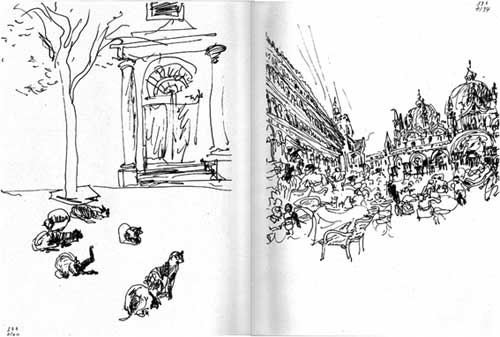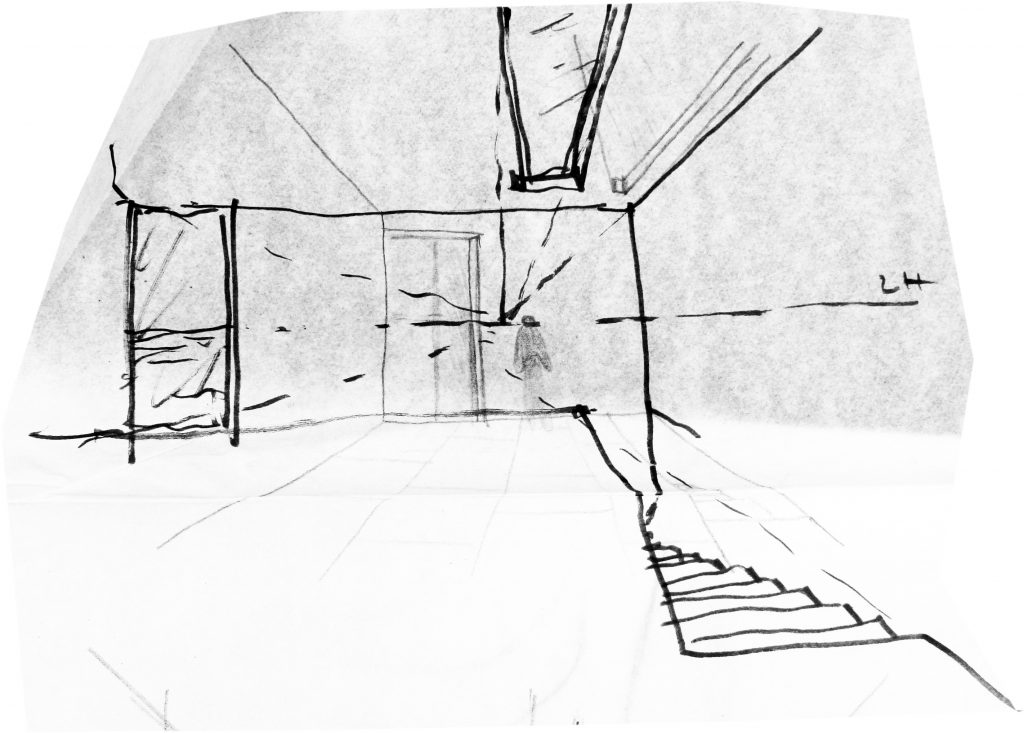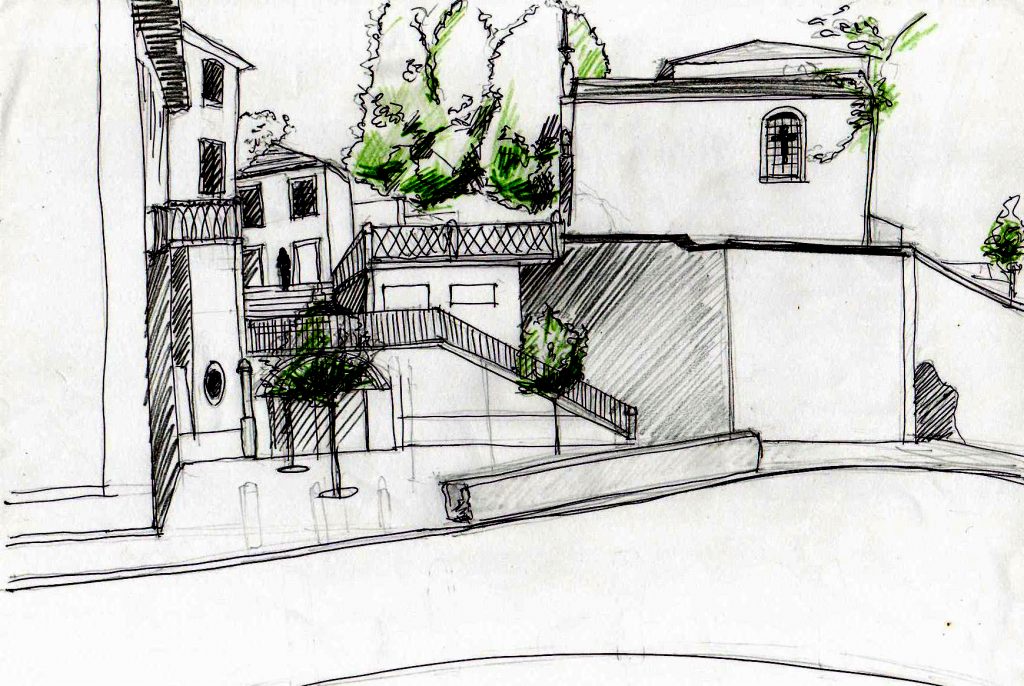
Thinking of a more sensitive and humanistic architecture is easier said than done. On the path I have taken, I rediscovered the method that the university I attended uses a great deal. Anyone who studies architecture has to know how to draw, this is not optional. In the first two years of the course, this is just as, if not more, important than learning the act of designing.
In the first year of the course, the intervention site was located in the richest part of the city. In the long afternoons that we started to draw those streets and landscapes with the sea in the background, the residents stopped, asked questions, commented and criticized. Above all they told stories, shared information and memories, some left us with complaints. Most of the population in that area were retired people, entrepreneurs, full-time mothers who lived in single-family homes. As young architecture students we were approached mainly by the elderly, when they came from their walks.

From the beginning, we were encouraged to sell one or two drawings where their houses were represented. When I realize, I already had more orders than time. Some houses, due to their open perspective, were easy to draw, others on the narrower streets were hard to see. However, the most interesting phenomenon is that they wanted the houses represented in their entirety, when in fact they had an exterior wall of at least 2 meters. The gymnastics to put on paper a fictitious reality was not easy. What made me realize from a very early stage that nobody wants to live cloistered, that this vision takes away the beauty and feeling of home. Parents want to say goodbye to their child, who is going to school, from the front door and they want to be able to follow him visually for a while along the way. Maybe that's why I partially buried the first building I designed, I didn't want to impose visual barriers on anyone.

In the second year, they gave us a transition ground, between single-family houses and condominiums. Sitting in the square, no one stopped to look, our presence was oblivious to passersby or at least uncomfortable. Of the many afternoons and mornings that I spent in the place, I was approached only once (in a rude way), by a homeless annoyed that I did not represent him in the sketch. I included him in my drawing and made another one to offer him with lunch. Meal that we both ate on the street, because his presence was not tolerated in the establishment. The space that refused him, he had it as a background numerous times. It is one of the icons of contemporary architecture, designed to embellish the city landscape and ignore life. That year I designed a building that would rise from the ground to make way for a square, green spaces, a communion between public and private space. Looking back, I might have done this because of the homeless person who dared to see me and shake me with reality.
Those two years and all that followed were not a mere drawing lesson, they were above all a tool for observing life. The act of drawing presumes concentration, dedication and street drawing even leads to some discomfort. In the end we can have the representation of the place, the important elements to elaborate the architecture, but the most valuable lesson is the sensitivity to the act of living. In the first case, I learned to listen, to look at a space that was unknown to me through the feelings and needs of others. In the second case, I learned to notice.
“If you can look, see, if you can see, notice.” – J.Saramago
Cities in their suspicious nature are silent, so it is even more important to know how to see what surrounds us. Represent it! Everything, without suppressing anything. I will be even more daring: draw what bothers you, let it simmer inside you, allow it to jump off the paper. You just found the problems, now find a solution. Glorify life, design spaces to respond to problems and always return to drawing. It is a valuable and humanizing tool.
